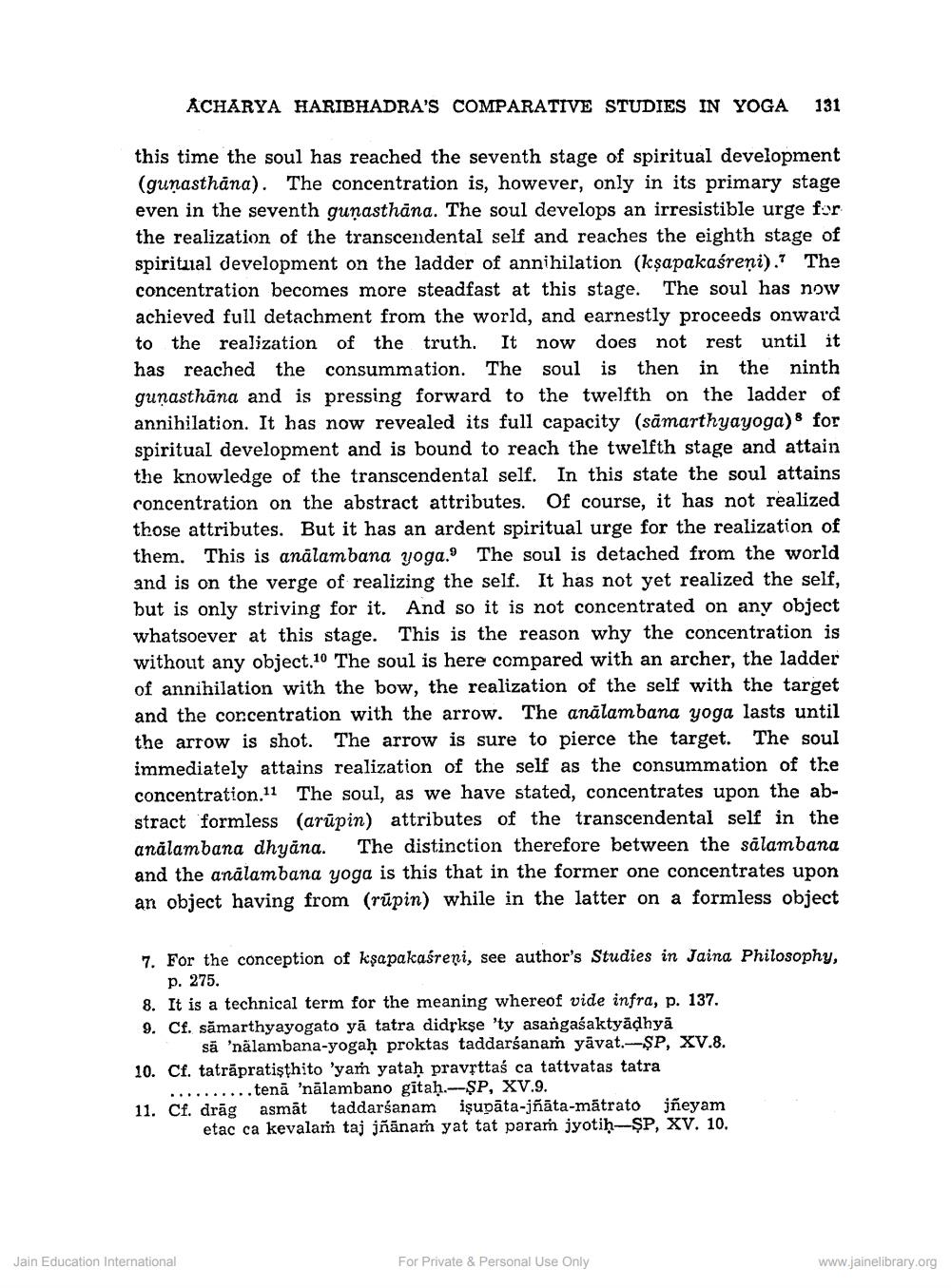________________
ACHARYA HARIBHADRA'S COMPARATIVE STUDIES IN YOGA
131
this time the soul has reached the seventh stage of spiritual development (gunasthāna). The concentration is, however, only in its primary stage even in the seventh gunasthāna. The soul develops an irresistible urge for the realization of the transcendental self and reaches the eighth stage of spiritual development on the ladder of annihilation (kşapakaśreņi). The concentration becomes more steadfast at this stage. The soul has now achieved full detachment from the world, and earnestly proceeds onward to the realization of the truth. It now does not rest until it has reached the consummation. The soul is then in the ninth gunasthāna and is pressing forward to the twelfth on the ladder of annihilation. It has now revealed its full capacity (sāmarthyayoga) 8 for spiritual development and is bound to reach the twelfth stage and attain the knowledge of the transcendental self. In this state the soul attains concentration on the abstract attributes. Of course, it has not realized those attributes. But it has an ardent spiritual urge for the realization of them. This is anālambana yoga.' The soul is detached from the world and is on the verge of realizing the self. It has not yet realized the self, but is only striving for it. And so it is not concentrated on any object whatsoever at this stage. This is the reason why the concentration is without any object.10 The soul is here compared with an archer, the ladder of annihilation with the bow, the realization of the self with the target and the concentration with the arrow. The anālambana yoga lasts until the arrow is shot. The arrow is sure to pierce the target. The soul immediately attains realization of the self as the consummation of the concentration 11 The soul, as we have stated, concentrates upon the abstract formless (arūpin) attributes of the transcendental self in the anålambana dhyāna. The distinction therefore between the sälambana and the anālambana yoga is this that in the former one concentrates upon an object having from (rūpin) while in the latter on a formless object
7. For the conception of kşapakaśreni, see author's Studies in Jaina Philosophy,
p. 275. 8. It is a technical term for the meaning whereof vide infra, p. 137. 9. Cf. sămarthyayogato yā tatra didrkse 'ty asangaśaktyädhyā
sā 'nālambana-yogah proktas taddarśanam yavat.--SP, XV.8. 10. Cf. tatrāpratisthito 'yam yatah pravṛttaś ca tattvatas tatra
..........tenā 'nālambano gitaḥ--SP, XV.9. 11. Cf. drāgasmāt taddarśanam işupāta-jñāta-mātrato jñeyam
etac ca kevalar taj jñānan yat tat param jyotiḥ--SP, XV. 10.
Jain Education International
For Private & Personal Use Only
www.jainelibrary.org




